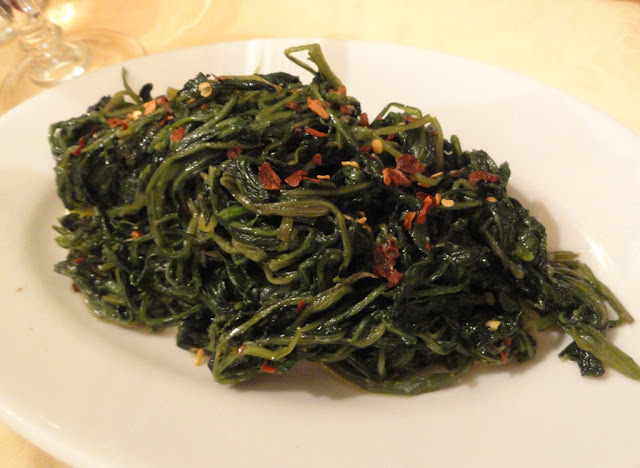 The last few days of 2012, and the first few of the new year, were gorgeous in Israel. I was having leisurely lunches on the beach in flip-flops and a t-shirt. I swam in the Dead Sea and toured Massada in summer gear. It was all very mild Mediterranean. And then, suddenly, the weather changed. Storms blew throughout the country. It snowed in Jerusalem. I was caught in a hail storm in Haifa. And I experienced torrential downpour in Tel Aviv for days on end. Every Israeli assured me that the weather was never like this. It hadn't been this cold and rainy in 50 years, said everyone. Lucky me! But in a way...lucky me. I'd always been in Israel during the summertime or early autumn. I got to experience something different. Hot spots in Tel Aviv were a little less crowded, and the stormy weather drove everyone indoors: to museums, theaters, intimate bars and cute cafes where one could enjoy languid conversation and numerous glasses of superb Israeli wine.
The last few days of 2012, and the first few of the new year, were gorgeous in Israel. I was having leisurely lunches on the beach in flip-flops and a t-shirt. I swam in the Dead Sea and toured Massada in summer gear. It was all very mild Mediterranean. And then, suddenly, the weather changed. Storms blew throughout the country. It snowed in Jerusalem. I was caught in a hail storm in Haifa. And I experienced torrential downpour in Tel Aviv for days on end. Every Israeli assured me that the weather was never like this. It hadn't been this cold and rainy in 50 years, said everyone. Lucky me! But in a way...lucky me. I'd always been in Israel during the summertime or early autumn. I got to experience something different. Hot spots in Tel Aviv were a little less crowded, and the stormy weather drove everyone indoors: to museums, theaters, intimate bars and cute cafes where one could enjoy languid conversation and numerous glasses of superb Israeli wine.
And so it happened, after one of these rainy nights I stayed out too late and imbibed a little too much, I slept in the next morning, disinclined to arise from under the cozy covers, in my adorable apartment in the Neve Tzedek neighborhood. But my friend had promised to treat me to a wonderfully warming drink in Jaffa that morning, followed by brunch in a local cafe. And since it was just a 10-minute walk away to the oldest port in the Western world, I was soon inspired to dress and venture out. Jaffa is historically a very Arab part of Tel Aviv, and this drink my Israeli friend wanted to introduce me to has Arab roots, so we were headed to the right part of town. Ironically, the drink also proved to be an excellent hangover salve, warming us on that cold, gusty day. The drink? SACHLAV.
 This thick milk-based drink was originally made with orchid tubers (called sahlab
in Arabic). Its preparation varies a bit from country to country: some versions add rose water or orange blossom water, and some add coconut and
cinnamon. Many are topped with nuts and dried fruit. In Turkey (possibly where it originated), its consistency is thick like pudding. In Israel, it's more of a drink, though often served with a spoon. It's warm. It's comforting. It was perfect on that cold morning in January.
This thick milk-based drink was originally made with orchid tubers (called sahlab
in Arabic). Its preparation varies a bit from country to country: some versions add rose water or orange blossom water, and some add coconut and
cinnamon. Many are topped with nuts and dried fruit. In Turkey (possibly where it originated), its consistency is thick like pudding. In Israel, it's more of a drink, though often served with a spoon. It's warm. It's comforting. It was perfect on that cold morning in January.
Sachlav, beyond its capacity to comfort, has always been considered an aphrodisiac. Maimonides even comments that one should drink it “to revive the spirits and to arouse sexual desire.” It's true that there is something wonderfully romantic about the drink's origins, the preciousness and exoticism of the orchid tubers that are the base of the drink in its original form. But in modern times, these orchids have become rare and prohibitively expensive, so they've mostly been replaced with thickening agents like corn or potato starch in today's versions. Less romantic, perhaps, but still really delicious.
Some claim that sachlav dates back to the Romans. Others argue that the orchid used to make the drink -- most likely indigenous to the tropics -- would not have arrived in the region until the Middle Ages. Regardless, the Medieval Arabs and Turks adopted the culinary tradition. The Germans and English got on board as well in the 17th century, replacing the milk with water and calling the beverage saloop. It even made an appearance in colonial America, but with the rising popularity of tea and coffee in the U.S. and Europe, the drink faded from the scene rather quickly. Their loss, our loss.
 |
| Sachlav Toppings |









